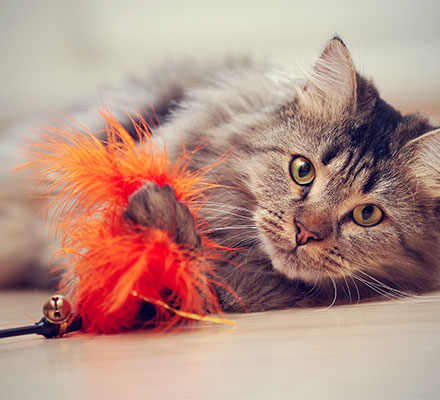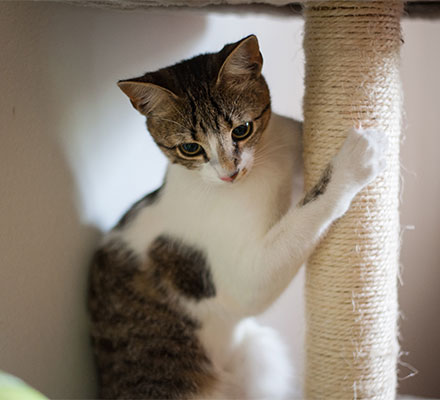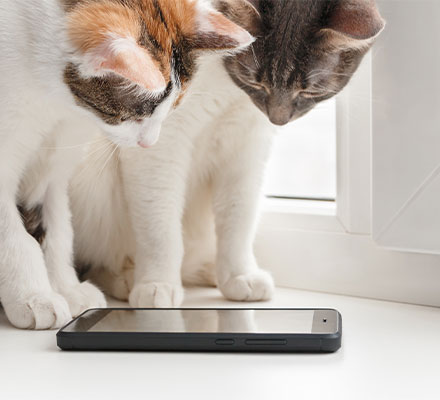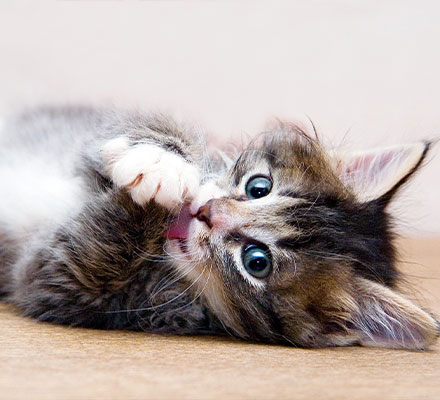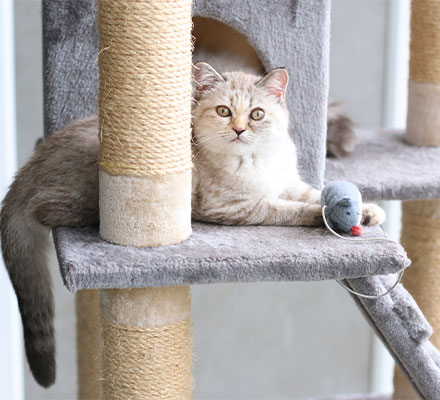5. Reinforce good behaviour
If you want your kitten to quickly learn how to use their litter tray, you should get in the habit of physically placing them in it when they first wake up in the morning, a few minutes after eating and drinking, and after play time. Gently encourage them with your words and never raise your voice. If your kitten has an accident on your carpet or couch, never punish them. They won’t understand and will only learn to fear you, seeking safer places to go next time. If you catch your kitten squatting, quickly take them to the litter box and gently praise and pat them.
More tips to keep in mind
Keep their litter box clean
Cats like clean environments and, if litter boxes become dirty, they’re likely to seek out somewhere cleaner to go. Get in the habit of checking the litter whenever you feed your kitten, and give the litter box a thorough wash once a week (earlier if needed of course) with a cat-friendly enzymatic cleaner. On the other hand, when trainee kittens have accidents around the house, be sure to clean the area immediately and thoroughly to remove any remaining odour – as failing to do so can see repeat accidents happen. An enzymatic cleaner is best for this.
Quickly clean up any messes
If your cat urinates or defecates somewhere other than the litter tray, you need to clean it thoroughly to ensure your cat cannot smell their waste and create an association between toilet time and a place that is not intended as a bathroom. Make sure you don’t use a product with ammonia, as urine contains ammonia. If your cat defecates outside the box, scoop it up and place it in the litter tray so your cat can smell it and create an association between relieving themselves and using the litter tray.
How to clean up diarrhoea
Cats can be just as prone to diarrhoea as we are, due to dietary issues and other factors. If this happens, try to stay patient and keep encouraging your kitten to go in the litter tray as this will minimise the mess you have to clean up. If you’re wondering how to go about cleaning up diarrhoea, you can use standard household cleaners and then eliminate the odour with cat clean up products.

 Greencross Vets
Greencross Vets 